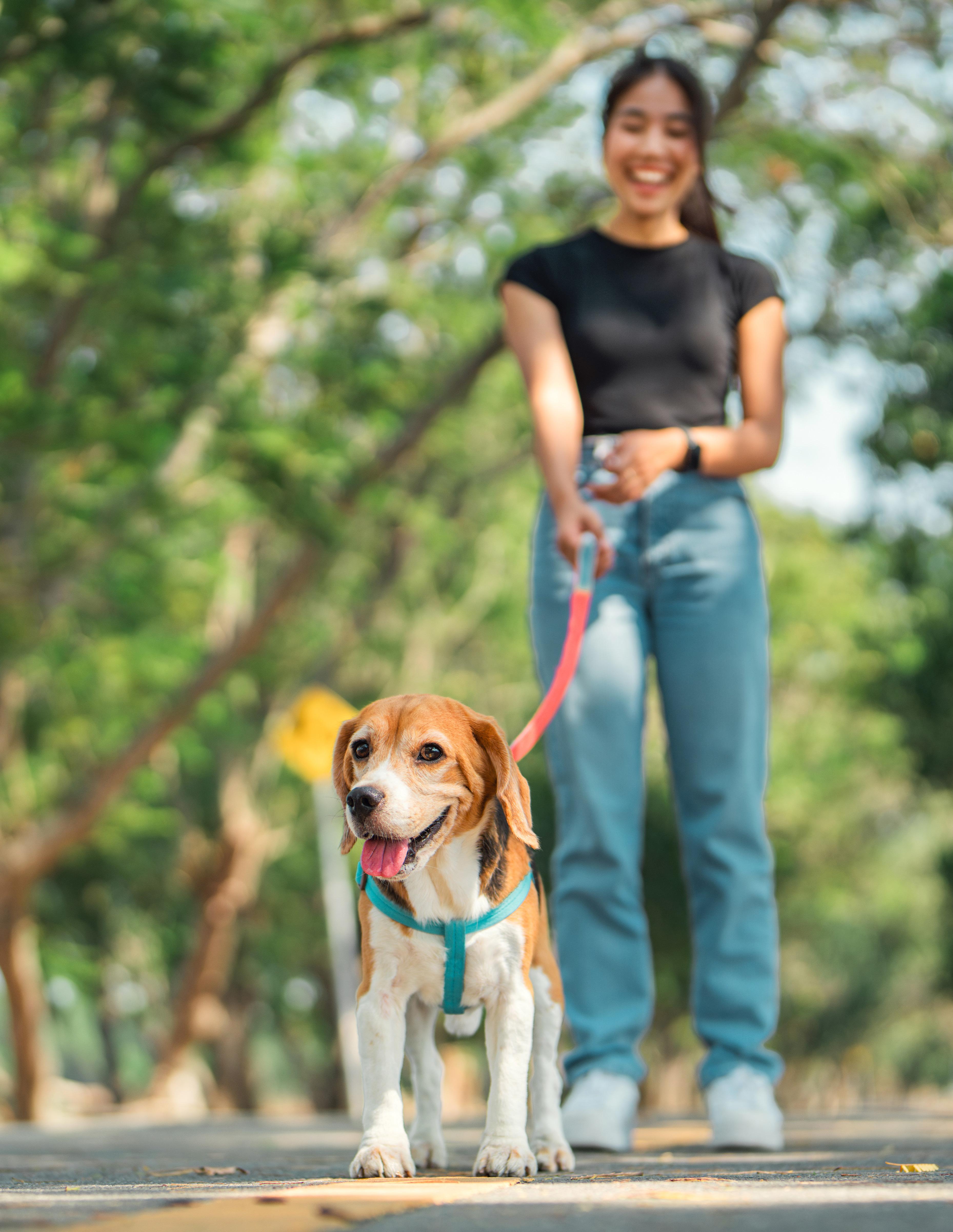
4 minute read
Dog Walking Etiquette: A Guide for Every Pet Parent
SIT, STAY, BEHAVE...
WRITTEN BY NATALIE GARBER, A Dog’s Best Friend
Whether you’re heading out for your very first walk with your dog or you’re a seasoned walker, there are a few important things to keep in mind to ensure a safe and enjoyable experience—for both you and your pup.
Leashes and Control
Before stepping out the door, consider the type of leash you’re using. My personal recommendation is a standard fixed-length leash, which offers better control during walks. Retractable leashes may seem convenient, but they can make it difficult to manage your dog and may even cause injuries if not used properly. The last thing you want is to be fumbling with a leash when another person, cyclist, or dog approaches.
Know Your Dog
Understanding your dog’s behavior is key. How does your dog react when encountering other people or dogs? Training can make a huge difference—not only does it strengthen your bond, but it also provides the tools needed to manage your dog in public spaces. If your dog tends to be leash-reactive or is uncomfortable around other dogs or people, maintain a safe distance. It’s helpful to have solid obedience cues like “sit/stay” or “down/ stay” when passing distractions such as cyclists, wildlife, or loud vehicles.
Also, consider the time of day—if it’s dark, reflective gear for both you and your dog can greatly increase visibility and safety.
Clean Up After Your Dog
One of the most important parts of dog walking etiquette: Always clean up after your pet. Carry waste bags and dispose of them properly. Not only is it respectful, but it also prevents the spread of disease to other dogs and keeps public spaces clean.
Also, be mindful of private property—avoid letting your dog wander into yards, flowerbeds, or gardens. Stick to sidewalks and designated walking areas.
Know Your Dog’s Limits
Different breeds have different needs. For example, an Australian Shepherd is likely to need longer, more frequent walks than an English Bulldog. Age and overall health also play a role—senior dogs may benefit from the mental stimulation of walks, but they likely require shorter and less intense outings.
Pay attention to your dog’s physical cues, and don’t overexert them. Especially in hot or cold weather, be mindful of how your dog’s breed, age, and health affect their ability to tolerate the elements.
Know Your Dog’s Limits
Different breeds have different needs. For example, an Australian Shepherd is likely to need longer, more frequent walks than an English Bulldog. Age and overall health also play a role—senior dogs may benefit from the mental stimulation of walks, but they likely require shorter and less intense outings.
Pay attention to your dog’s physical cues, and don’t overexert them. Especially in hot or cold weather, be mindful of how your dog’s breed, age, and health affect their ability to tolerate the elements.
Gear Up Wisely
The type of harness or collar you choose should be appropriate for your dog’s breed and behavior. For example:
Flat collars may not be suitable for dogs like pugs, whose anatomy makes them more prone to respiratory issues.
No-pull harnesses (like the Easy Walk) or head halters (like the Halti) can help with dogs that pull on the leash.
Training collars (such as prong or e-collars) should only be used if your dog has been properly acclimated and under the guidance of a professional.

Always bring waste bags (they’re inexpensive and easy to find online) and, for longer walks, consider a collapsible water bowl and fresh water.
Top 5 Dos and Don’ts of Dog Walking
Do:
• Invest time in training to improve control and communication.
• Let your dog sniff—this is how they experience the world!
• Prioritize safety—for you, your dog, and others.
• Always clean up after your dog.
• Consider temperature, time of day, and your dog’s physical condition before setting out.
Don’t:
• Expect everyone else to follow good dogwalking etiquette.
• Assume other dogs are friendly or that people want to interact with your dog.
• Walk during peak heat (especially on hot pavement—if you can’t touch it for 7 seconds, it’s too hot for paws).
• Use retractable leashes in crowded or high-traffic areas.
• Ignore signs of overheating—dogs pant to cool down, and excessive panting, drooling, or stumbling can be signs of heat stroke.
Weather Awareness
In extreme weather (hot or cold), adjust your walk times and routes accordingly. Morning and evening are typically best during summer. Brachycephalic breeds (short-nosed dogs), seniors, and overweight dogs are at higher risk of heat stroke. Use shaded, grassy areas instead of pavement whenever possible.
If you notice symptoms of heat exhaustion— excessive panting, drooling, or instability—this is a medical emergency. Seek veterinary attention immediately.
Final Thoughts
Dog walking should be a rewarding experience, offering exercise, enrichment, and bonding time. With the right preparation, awareness, and a bit of courtesy, you can make sure your walks are safe and enjoyable for everyone. ■



